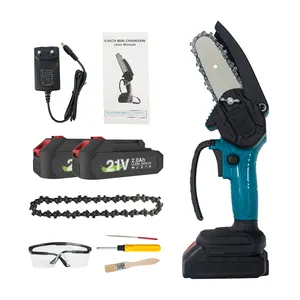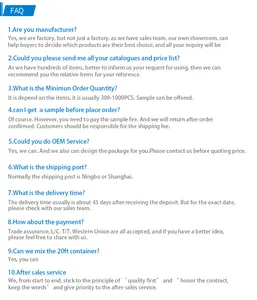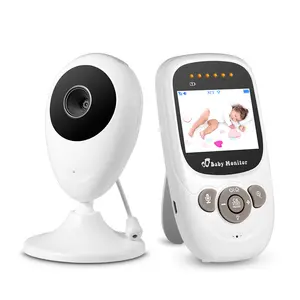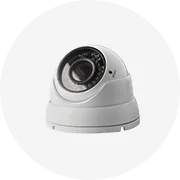Phổ biến trong ngành của bạn






Giao Hàng Nhanh Bộ Dụng Cụ Sân Vườn Cưa Bê Tông Diesel Xi Lanh Đơn Máy Cắt Tường Bê Tông 82cc Cưa Rãnh
340,00 US$ - 360,00 US$
Đơn hàng tối thiểu: 10 Cái



Nhà Máy Bán buôn điện cây chi nhánh cắt tỉa Saw 4 inch 2000mAh pin xách tay Li-ion Điện Mini không dây nhỏ Chainsaw
11,20 US$ - 12,80 US$
Đơn hàng tối thiểu: 2 Cái
Vận chuyển mỗi chiếc: 24,72 US$



Bán Buôn Chất Lượng Cao Công Cụ Vườn Cưa Điện Cầm Tay Mini Pin 6 Inch 8 Inch Chuỗi Saw Cho Cắt Gỗ
14,56 US$
Đơn hàng tối thiểu: 2 Cái







Neotec 62cc công cụ cắt gỗ Xăng Chainsaw với 20in bar và chuỗi MS260 026 Xăng Chainsaw
54,00 US$ - 58,00 US$
Đơn hàng tối thiểu: 1 Bộ











Kim Loại Cắt Ban Nhạc Đã Thấy CE Tiêu Chuẩn Cắt Kim Loại Bandsaw Với Lưỡi Dao Miễn Phí
558,00 US$
Đơn hàng tối thiểu: 5 Bộ






Ngang Dọc Hướng Dẫn Sử Dụng Xoay Đầu Kim Loại Di Động Cắt Ban Nhạc Saw
200,00 US$
Đơn hàng tối thiểu: 1 Bộ






5 "kim loại điện cắt ban nhạc Saw xách tay 400 Wát DC động cơ tốc độ biến kim loại bandsaw kim loại máy gia công
185,00 US$ - 225,00 US$
Đơn hàng tối thiểu: 30 Đơn vị






Máy Cắt Thép Không Chổi Than Lạnh Không Dầu Di Động Máy Cắt Thép Không Chổi Than Tốc Độ Cao 355Mm Lưỡi Cưa
312,00 US$
Đơn hàng tối thiểu: 1 Cái









Dụng Cụ Điện Cầm Tay Tốc Độ Biến Đổi 8793600 EXTOL 1200W Sabre Saw Điện Cưa Chuyển Động Qua Lại Để Cắt Gỗ/Nhựa/Kim Loại
63,45 US$ - 70,50 US$
Đơn hàng tối thiểu: 50 Cái
Các tìm kiếm liên quan:
cưa cắt kim loại nhỏ10 cưa cắt kim loạicưa cắt kim loại chuyên nghiệpcưa cắt kim loại điệncưa cắt kim loạicưa cắt kim loạicưa cắt kim loại boschkim loại cưa cắt bằng taycưa cắt kim loại tiện dụngcưa cắt kim loại điệncưa cắt kim loại 305mmcưa cắt kim loại dọckim loại cắt cưa boschcưa cắt kim loại nặngcưa cắt kim loại






Cưa Cắt Kim Loại Gỗ Đai Điện Cầm Tay Loại 2400W 355Mm
58,00 US$ - 65,00 US$
Đơn hàng tối thiểu: 100 Cái





HX-260G ngang máy cưa kim loại cầm tay cắt xoay ban nhạc đã thấy ban nhạc đã thấy cho kim loại
1.500,00 US$
Đơn hàng tối thiểu: 1 Bộ



Tolhit 230V 900W gỗ chuyên nghiệp cắt kim loại cầm tay không dây điện qua lại thấy máy
16,90 US$ - 17,50 US$
Đơn hàng tối thiểu: 1000 Cái






BS-712N/ BS-712R Ngang Ban Nhạc Đã Thấy Máy Kim Loại Cầm Tay Xoay Ban Nhạc Cưa Máy Cho Bán Saw Máy Cắt Kim Loại
750,00 US$
Đơn hàng tối thiểu: 1 Bộ






Máy Cưa Dây Dọc Cắt Góc 45 Độ Chất Lượng Cao Máy Cưa Dây Di Động Ngang Máy Cưa Dây Kim Loại
1.120,00 US$ - 1.200,00 US$
Đơn hàng tối thiểu: 1 Bộ










0 Đến 45 Độ Xách Tay Mini 4 Inch Ban Nhạc Kim Loại Saw Máy Cắt
100,00 US$ - 420,00 US$
Đơn hàng tối thiểu: 1 Bộ




Hot Bán 10 Inch Miter Saw ZB Xách Tay Mini Thép Chop Saw Cắt Off Thấy
Sẵn sàng vận chuyển
40,00 US$ - 45,00 US$
Đơn hàng tối thiểu: 50 Cái
Vận chuyển mỗi chiếc: 27,72 US$







Cưa Cắt Băng BS-1018R Mới Giá Máy Cưa Cắt Băng Kim Loại Kích Thước Nhỏ Để Bán
2.200,00 US$ - 2.500,00 US$
Đơn hàng tối thiểu: 1 Bộ






Suca Nhỏ Xách Tay DIY Cầm Tay Gỗ Bandsaws Ban Nhạc Vành Đai Saw Kit Kim Loại Cắt Ban Nhạc Saw
132,00 US$ - 154,00 US$
Đơn hàng tối thiểu: 20 Cái






Giá cả cạnh tranh cắt kim loại Thông tư Saw chất lượng xách tay thông tư Saw
15,00 US$ - 18,00 US$
Đơn hàng tối thiểu: 100 Cái






Máy Cưa Dây Cầm Tay HX-180 Cắt Dây Kim Loại Có Đế Bằng Gang
Sẵn sàng vận chuyển
433,00 US$ - 1.141,00 US$
Đơn hàng tối thiểu: 2 Cái
Vận chuyển mỗi chiếc: 222,32 US$






Bán Chạy Cưa Cắt Điện 600W CƯA GỖ Điện Cưa Máy Cưa Cầm Tay Chế Biến Gỗ
9,70 US$ - 12,70 US$
Đơn hàng tối thiểu: 10 Bộ






Máy Cưa Cắt Kim Loại Chạy Điện Tiện Dụng 355Mm 2000W Với Đế Chịu Lực Cao
Sẵn sàng vận chuyển
39,50 US$ - 45,00 US$
Đơn hàng tối thiểu: 50 Cái
Vận chuyển mỗi chiếc: 14,00 US$

Xách tay 1500W 250mm chế biến gỗ trượt bảng Saw Bảng điều chỉnh Saw Máy cắt miter cưa
65,50 US$ - 70,00 US$
Đơn hàng tối thiểu: 100 Cái






20V Xách Tay Có Thể Sạc Lại Lithium Electric Cưa Chuyển Động Qua Lại Công Suất Cao Cordless Saber Cưa 250 Mét Gỗ Kim Loại Máy Cắt C02
Sẵn sàng vận chuyển
27,00 US$ - 48,00 US$
Đơn hàng tối thiểu: 2 Bộ
Vận chuyển mỗi chiếc: 38,81 US$






Ban Nhạc Đã Thấy Kim Loại Cầm Tay Ban Nhạc Đã Thấy Nhà Máy/Tinh Thần/Cắt/Ống Bandsaw
Sẵn sàng vận chuyển
1.300,00 US$ - 1.500,00 US$
Đơn hàng tối thiểu: 1 Bộ
Vận chuyển mỗi chiếc: 4.200,00 US$






Suca Mini Xách Tay Ban Nhạc Saw Bảng Cầm Tay Bàn Bandsaw Vành Đai Thép Ban Nhạc Cưa Cơ Sở Kim Loại Máy Cưa
90,00 US$ - 105,00 US$
Đơn hàng tối thiểu: 50 Cái






255Mm 2000W Nhôm Cắt Điện Xách Tay Thông Tư Kim Loại Miter Cưa Điện
78,33 US$ - 82,33 US$
Đơn hàng tối thiểu: 2 Bộ






HY-125CW1 Màu Sắc Tùy Chỉnh Chất Lượng Cao Hoàn Toàn Tự Động Ban Nhạc Đã Thấy Cầm Tay Cưa Ngang Ban Nhạc Đã Thấy Cắt Kim Loại
122,00 US$ - 135,00 US$
Đơn hàng tối thiểu: 10 Cái






Bán Sỉ Máy Cưa Dây Cầm Tay Máy Cưa Dây Cắt Kim Loại Nhỏ
750,00 US$ - 850,00 US$
Đơn hàng tối thiểu: 1 Bộ






800 Wát điện cầm tay công cụ Sabre Saw điện qua lại Saw cho cắt gỗ/Nhựa/Kim loại
27,01 US$ - 30,61 US$
Đơn hàng tối thiểu: 100 Cái





Đa chức năng và di động nhỏ phong cách cắt kim loại ban nhạc đã thấy máy móc BR-200
970,00 US$
Đơn hàng tối thiểu: 1 Bộ



HS7016 Mini Xách Tay Hack Đã Thấy Máy Cho Kim Loại Cắt
750,00 US$ - 850,00 US$
Đơn hàng tối thiểu: 1 Bộ






Nhà Máy Bán buôn Độ chính xác cao kim loại cầm tay ban nhạc đã thấy máy có thể thay đổi góc cắt ống kim loại ban nhạc máy
850,00 US$ - 890,00 US$
Đơn hàng tối thiểu: 1 Bộ

Tomac 710W xách tay điện Saber qua lại Saw công cụ điện cho gỗ và cắt kim loại
22,26 US$ - 23,64 US$
Đơn hàng tối thiểu: 500 Cái


BS-128DR Cắt Kim Loại Ban Nhạc Đã Thấy, TTMC Xách Tay Ban Nhạc Đã Thấy
790,00 US$ - 900,00 US$
Đơn hàng tối thiểu: 1 Bộ
Các danh mục hàng đầu
Giới thiệu về cưa cắt kim loại cầm tay
Alibaba.com cung cấp các sản phẩm 5748 cưa cắt kim loại cầm tay. Có rất nhiều cưa cắt kim loại cầm tay lựa chọn dành cho bạn, chẳng hạn như oem, odm, và obm. Bạn cũng có thể chọn từ cưa gỗ, cưa kim loại, và cưa gạch cưa cắt kim loại cầm tay. Cũng như từ công nghiệp, tự làm cưa cắt kim loại cầm tay.Và bất kể cưa cắt kim loại cầm tay là thông tư saw, cưa, hay miter saw.



















